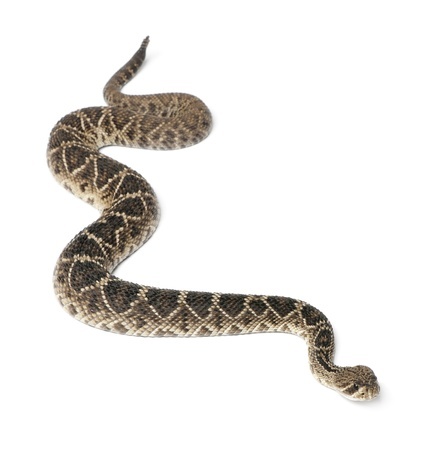Rattlesnakes

RATTLESNAKE (genera Crotalus and Sistrurus)
Description:
Rattlesnakes are venomous snakes belonging to the subfamily Crotalinae, also known as the pit vipers. They are predators that inhabit many different habitats and primarily feed on small animals such as birds and rodents. These snakes are named for the rattle found at the end of their tails, which creates a loud rattling noise when vibrating. This noise serves as a warning to nearby creatures or deters predators. Rattlesnakes are the primary cause of snakebite injuries in North America, although they rarely bite unless provoked or threatened. With prompt treatment, their bites are seldom fatal. There are 36 known species of rattlesnakes, with between 65 and 70 subspecies. They are native to the Americas, ranging from British Columbia through Ontario in southern Canada, down to central Argentina. The largest species of rattlesnake is the eastern diamondback, which can reach lengths of up to 8 ft (2.4 m).
Biology:
Rattlesnakes are cold-blooded animals and are most active during the warmer months of spring and summer. They usually hibernate during the colder months but can be active all year in warmer climates and desert areas.
The gastric fluids of rattlesnakes are extremely powerful allowing them to digest even tough foods like bone. Optimal digestion occurs when the snake maintains a body temperature between 80 and 85 °F (25 and 29 °C). If the prey is small, the rattlesnake often continues hunting. If the meal is adequate, the snake finds a warm, safe location to coil up and rest until the prey is digested. Feeding habits play an important ecological role by limiting the size of rodent populations, which prevents crop damage and stabilizes ecosystems.
Did You Know?
In Native American mythology, rattlesnakes were considered important and were often used for healing. Some believed that rattles could help with childbirth and teething. The rattles are made of keratin, the same protein that makes up hair and fingernails. Each time a rattlesnake sheds, a new segment is added to its rattle, and it can move its rattle back and forth more than 60 times per second.
Impact:
Rattlesnakes can pose a danger to humans and pets. The impact goes beyond just economic costs, as the physical and emotional harm that can result from a rattlesnake encounter is significant. Rattlesnakes tend to avoid open areas where they can't hide from predators and usually steer clear of humans if they sense their approach. They typically only bite when they feel threatened or provoked, with most victims being males. Surprisingly, about half of the bites occurred when the victim saw the snake but did not try to move away.
Rattlesnakes generally try to avoid humans and other predators, but dogs are more likely to confront them aggressively and are at higher risk of dying from a rattlesnake bite. Fortunately, dogs can be vaccinated against rattlesnake bites.
Solutions:
Rattlesnakes are unwelcome intruders that can take up residence on a property if the conditions are right. They are drawn to properties with plentiful food sources such as mice, rats, voles, and squirrels. The most effective method of controlling rattlesnakes is to reduce the population of rodents on the property. Additionally, using snake repellents and physical barriers can forcefully move snakes away from buildings and property lines.
